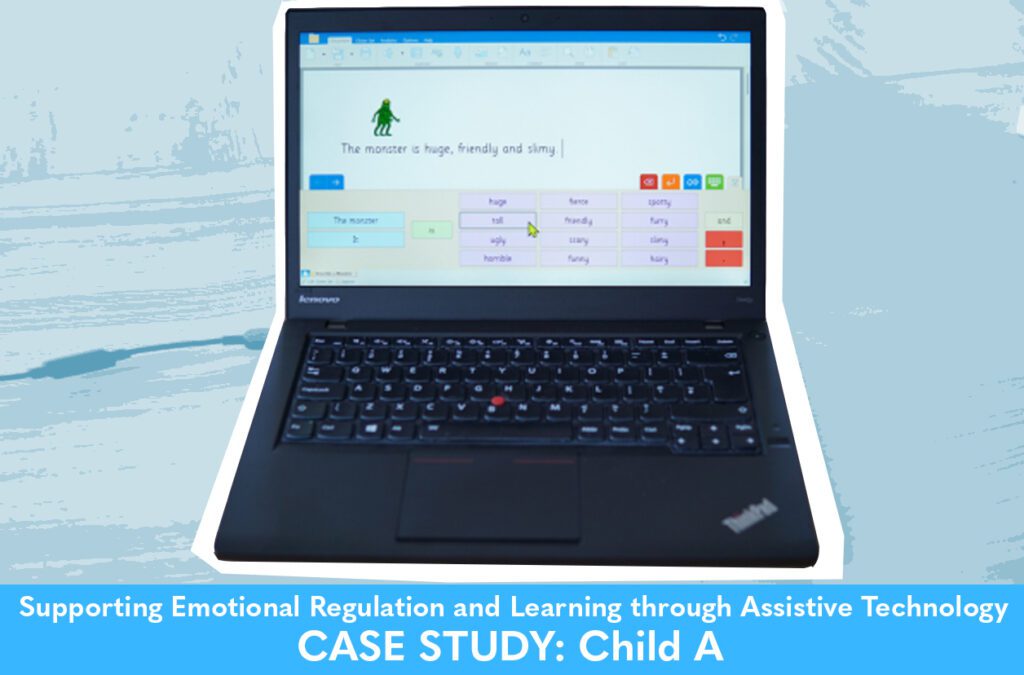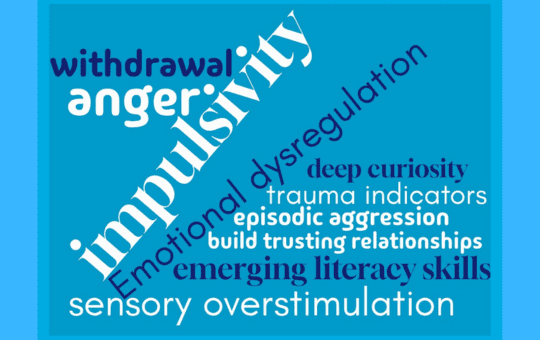Case Study: Child A – Supporting Emotional Regulation and Learning through Assistive Technology
Background
Child A is a Ukrainian refugee who arrived in the UK during what would have been his Year 1 academic year. However, due to limited English proficiency, unsettled wellbeing, and systemic transition challenges, he was initially placed in a reception class to facilitate language acquisition and emotional support.
He is currently in a Year 2 class, having been held back for one academic year to accommodate his disrupted educational journey and ongoing regulation needs. During his early time in the mainstream school, Child A experienced significant overstimulation and dysregulation. These episodes, often marked by heightened anxiety, withdrawal, and occasional violent outbursts, were understood to be rooted in trauma and compounded by communication barriers.

To provide a more tailored and supportive environment, Child A attended a school-based afternoon provision focused on emotional regulation and sensory adjustment. This approach helped reduce exposure to triggering stimuli while building foundational skills for re-entry into a full-time mainstream class. Over time, with the introduction of assistive technology and targeted communication tools, he began to show signs of readiness for reintegration into a more structured academic pathway.
Child A has been formally diagnosed with ADHD. His presentation reflects traits of neurodivergence, including sensory sensitivities, impulsivity, and significant challenges with emotional regulation. These traits are further compounded by trauma-informed indicators linked to his refugee background and early developmental experiences.
His history suggests exposure to multiple Adverse Childhood Experiences (ACEs) – including displacement, cultural and linguistic isolation, and disrupted attachment patterns – which have shaped his behavioural responses and learning profile. Manifestations include hypervigilance, difficulty with transitions, and intense emotional reactions when overwhelmed or misunderstood.
Emotional & Behavioural Profile
Primary challenges: Emotional dysregulation, impulsivity, trauma indicators, sensory overstimulation
Response to stress: Anger, withdrawal, episodic aggression
Strengths: Deep curiosity, emerging literacy skills, ability to form trusting relationships with adults

Intervention & Support
To increase participation and accessibility, Child A was introduced to assistive technology, including:
- A laptop with reading and writing support software (e.g. ReadingWise and Clicker 8)
- A reading pen, pivotal to his regulation and comprehension
Spotlight on the Scan marker Reading Pen
The Scan Marker reading pen serves as a dual-purpose tool:
- Translation support: Child A uses it to decode unfamiliar English vocabulary into Ukrainian, promoting understanding and reducing anxiety linked to language processing delays.
- Self-regulation aid: The instant, tactile feedback from the pen mitigates frustration and prevents escalation. When dysregulated, Child A often reaches for the pen to reorient himself in the learning environment.
- Independence builder: Enables self-paced learning and minimises reliance on adult prompting.
Feedback from staff indicates that when he uses the pen to access translated content, his engagement increases, and his behaviour stabilises markedly. He’s begun articulating curiosity about new words and shows pride in translating independently.


Talking Mats
To support expression and decision-making, Child A uses Talking Mats, especially during:
- Emotional check-ins
- Transitions
- Reflections after dysregulated episodes
Benefits include:
- Visual structure that reduces cognitive load
- Empowerment to express preferences, discomforts, and needs through tangible choices
- Improved communication with adults across settings, supporting consistency and trust
Staff have observed that Talking Mats encourage reflective thinking and help Child A process events more calmly, often enabling restorative conversation and collaborative problem-solving.

Progress & Transition Planning
Child A will transition to Year 4 in September. This accelerated move is designed to better match his chronological age and foster readiness for secondary pathways. The following strategies will underpin the transition:
- Continued use of assistive technology to scaffold attention and expressive language
- Safe spaces and structured routines embedded across the day
- Adult-led emotional check-ins, especially during unstructured times
- Peer-inclusive activities to build social confidence without overwhelming sensory inputs
Outcomes & Next Steps
Through the integrated use of assistive technology and communication tools, Child A has:
- Increased participation in learning
- Expanded his English vocabulary while retaining linguistic identity
- Reduced behavioural incidents, especially those triggered by language and transition-related stress
- Begun developing emotional awareness and communicative autonomy
Ongoing focus areas:
- Embedding Talking Mats as a routine pre- and post-lesson tool
- Expanding bilingual scaffolds for subject-specific vocabulary
- Tailoring group activities to incorporate tech-based regulation supports
- Enhancing staff consistency in trauma-informed communication strategies
Child A’s journey illustrates the transformative impact of personalised, trauma-informed approaches paired with assistive technology and communication supports. Despite the complexities of refugee transition, neurodivergent presentation, and Adverse Childhood Experiences (ACEs), Child A has begun to demonstrate resilience, emerging autonomy, and a readiness to engage with learning – when scaffolded appropriately.
The integration of tools such as the reading pen and Talking Mats has not only facilitated access to the curriculum but also restored a sense of agency and linguistic identity. These supports have proven crucial in regulating his emotions, breaking down cognitive and communication barriers, and enabling staff to build relational trust.



